Madrid Guide
The top 10 things to do in Madrid
Madrid is one of the most overlooked cities by British tourists, despite being the country’s capital. Just 5% of the British tourists who go to Spain each year visit Madrid and yet it is a city with so much to see and do, a vibrant atmosphere and something to please everyone.
However, with so much to choose from it can feel a bit overwhelming to know which are the essential things, not to be missed, particularly if you only have a few days.
Madrid does have a really good Metro system, which makes it easy to get around, but the city centre is also quite walkable (with a good pair of comfortable trainers), so you can get to see more as you walk around.
These are, in our opinion, the 10 must-see places in Madrid, but this list is by no means exhaustive.
1.Puerta del Sol and Km 0
Whilst not the most beautiful part of the city, the Puerta del Sol is like its beating heart. This central square is pedestrianised and is often the “go to” meeting point for friends to get together. It is always vibrant and full of life (some may say crowded) and also houses the statue of the Bear and the Strawberry Tree, the symbol of Madrid and KM 0, the point from which all distances to other points in Spain are measured.
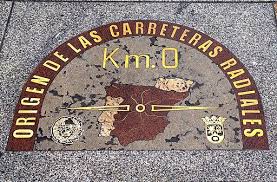
Don’t miss the Mallorquina bakery and café while you are there. Established in 1894, this cake shop has been pleasing tourists and the locals with their traditional cakes and pastries, all set in traditional café surroundings.
2. Plaza Mayor
The Plaza Mayor, just around the corner from the Puerta del Sol is a square of around 120 metres square, that is quite breathtaking to look at. With porticoes all around, 277 decorative wrought iron balconies, and 10 different entrance points, the Plaza Mayor is a great place to people watch.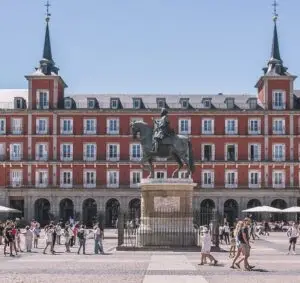
Calamari sandwiches in the Plaza Mayor are the order of the day if you want to really experience Madrid life, or take a little detour to one of the many tapas bars on the side roads leading up to it, where you might get the same thing without the premium for sitting in the Plaza itself.
The building that attracts the most attention is the Casa de la Panadera , characterized by a façade packed with frescoes of mythological characters. Its name is derived from the first use of the building by the bakers’ guild. Today it houses the tourist office.
3. Gran Vía, the main artery of Madrid
At over a hundred years old, Gran Vía is one of the city’s main arteries and one of its most iconic avenues. Its construction, between 1910 and 1931, marked the beginning of the modernisation of the city, with the appearance of the country’s first skyscrapers.
Although it is barely 1.3 km long, it is lined with some of the most sought after retail shops, drawing over 10 million people a year. Shops range from high end luxury brands to international popular brands, and it also hosts theatres, cinemas and some of the city’s most iconic buildings too. It is a little piece of the past, present and future of Madrid.
4. El Retiro – the city’s main park
A space to relax, enjoy, get away from the traffic and experience Madrid’s Retiro. The Retiro is surprisingly green and peaceful considering it is situated right in the heart of the city and has been dedicated a UNESCO World Heritage site.
With its own lake, you can enjoy some boating, wander around and take in some of the street acts often found here, enjoy a picnic or just sit in one of the park’s café’s and soak up the bird song. There are also places nearby to hire bikes and ride through the park.
The Palacio de Cristal (Glass Palace) is a glass house in the centre of the park, is a classic example of cast-iron architecture. It was originally built as a greenhouse to showcase flora and fauna as part of an exhibition on the Philippines which was a Spanish colony at the time. Today it is owned by the Reina Sofia Museum and hosts temporary exhibitions all year round.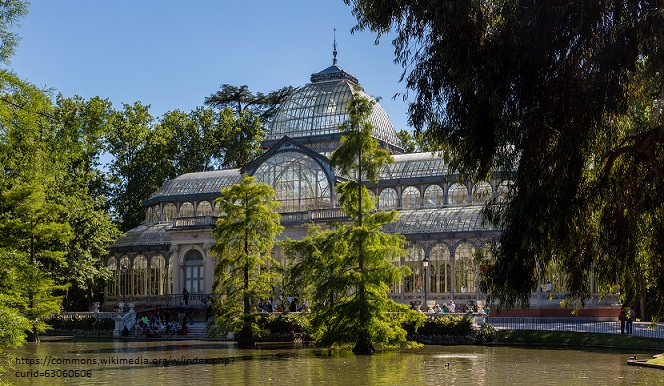
5. The Royal Palace
Although the Spanish Royal family no longer live here, the Royal Palace of Madrid is still fully operational, as it is where the State ceremonies are held.
A large 18th Century Palace, it is the largest palace in Europe and has more than 3,000 rooms. Visitors can tour the palace and visit not only the impressive rooms, but there are often temporary exhibitions held in side.
Admission costs €?? reserve your place online here ), but if you visit the Royal Palace from Monday to Thursday afternoons it will be free!
6. Museums and Art Galleries
When it comes to choosing from the wide range of amazing museums and art galleries that Madrid has to offer, it is going to be down to personal taste and interest as to which ones you want to visit. But here are our top suggestions:
- Prado Museum
With over 8,000 paintings, including masterpieces such as Las Meninas (Velázquez), the Garden of Earthly Delights (El Hieronymus) or La Maja Desnuda and El 3 de mayo en Madrid (Goya). You could spend days wandering around this museum jam packed with classic art.
It might be a good idea to take a guided tour with an art expert to really learn more about the art housed in the Prado.
- Reina Sofia Museum
For lovers of modern art, the Reina Sofia is the place to visit, housing paintings by Miró, Picasso, Dalí, Pollock, Gris or Braque, to name a few.
If you want to take a guided tour, you can reserve your place here .
- Thyssen Museum
Another perfect plan in Madrid to spend a few hours in the company of works by artists as varied as Rembrandt, Van Gogh, Schiele, Kooning, Dalí, Gauguin, Hopper, Picasso or Degas (to name a few). You can also sign up for a guided tour for this museum .
- Museo Sorrolla
The Sorolla Museum, which has retained the original atmosphere of the home and studio of the renowned Spanish painter Joaquín Sorolla y Bastida (Valencia, 1863 – Cercedilla, 1923), houses the largest collection of his works. It is one of the best preserved house-museums of an artist in Europe, and its garden, which was also designed by him, is a little oasis in the city and was a common subject in his later paintings.
Situated in the home in which the artist lived with his family from 1911 till his death in 1923, the house and all its belongings were bequeathed to the Spanish government by his widow in 1925, who asked for a museum to be opened in memory of her husband.
In the museum, which opened in 1932 and which retains its original decor, you’ll find most of the objects Sorolla acquired throughout his lifetime including sculptures, ceramics, traditional clothes and jewellery, letters and photographs. It is also home to a remarkable collection of over 1200 of his paintings and drawings, which has continued growing since 1982 thanks to works purchased by the Spanish state.
- Archaeological Museum
The National Archaeological Museum, houses one of the world’s most important antique collections comprising implements and works of art from Mediterranean cultures, spanning from prehistory to the 19th century.
7. San Miguel Market
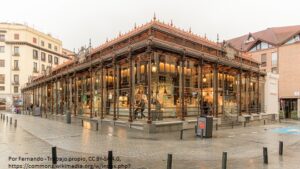 More than 100 years have passed since the San Miguel Market was inaugurated as a food market. Today, this historic building is one of the main gastronomic markets in the world, allowing its visitors to embark on a journey through the essence and flavours of every corner of Spain.
More than 100 years have passed since the San Miguel Market was inaugurated as a food market. Today, this historic building is one of the main gastronomic markets in the world, allowing its visitors to embark on a journey through the essence and flavours of every corner of Spain.
From the finest Iberian ham or the freshest seafood arriving daily from Galicia, to Mediterranean rice dishes to the most special cheeses from Castilla, Asturias, or the Basque Country.
A visit to San Miguel Market is a sensory experience for the eyes, ears and taste buds that you won’t forget quickly, from which you will find it hard to walk away empty handed.
8. Almudena Cathedral
Right in front of the Royal Palace, in the Plaza de Oriente, stands the Almudena Cathedral, another remarkable building in Madrid, not to be missed. Built in different styles (varying from neoclassical to neo-Gothic and neo-romantic), it is currently the most important religious building in the capital.
Entry is free, although donations are optional. If you want to go up to the dome the price is €6 (also includes entry to the Museum, the Chapter House and the Sacristy).
9. Plaza de Cibeles
The Plaza de Cibeles houses one of the most iconic landmarks of the city and is located right in its heart.
The Fountain of Cibeles is a representation of the Goddess Cibeles in a chariot pulled by two lions. The fountain itself served as a water supply mechanism for the citizens of Madrid. However, it was moved to the centre of the square in 1895, where it lost its functionality to the extent that it became an ornamental element.
The fountain is surrounded by historical buildings contributing to the architectural beauty of the square. Just a short stroll out of the Plaza you will find the Banco de Espana (Bank of Spain).
10. Madrid nightlife
Madrid’s nightlife is vibrant and diverse and all part of the Madrid experience, offering something for every age group. Young adults flock to lively neighborhoods like Malasaña and Chueca, where trendy bars, nightclubs, and live music venues keep the energy high until the early hours. For a more sophisticated experience, mature visitors can enjoy elegant cocktail bars and flamenco shows in areas like Salamanca and La Latina. The city’s tapas culture also provides a perfect way to start the evening, with cozy taverns and bustling plazas offering a taste of traditional Madrid.
Related articles
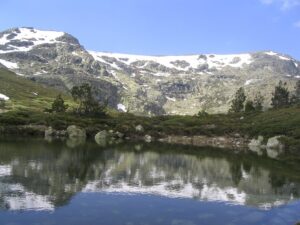
Guadarrama: a local view
Guadarrama makes the perfect day trip from the hustle and bustle of Madrid and is well worth a visit.

Getting around Madrid on public transport
The public transport system in Madrid is easy to navigate, cheap and fast to use. All you need is to
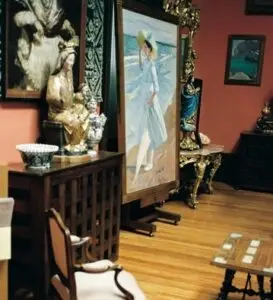
Madrid’s hidden gems: lesser known places to explore
Beyond the famous attractions of Madrid, lies a treasure trove of lesser-known gems waiting to be discovered.
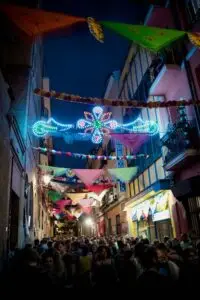
Madrid’s traditional fiestas
lively and colourful calendar of fiestas offers a unique glimpse into the heart of Spanish culture, characterised by music, dance,
